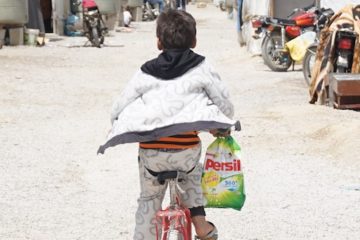June 1, 2014
As a result of the recent drought affecting Syria and neighboring countries, refugees are more likely to contract diseases due to a shortage of safe drinking water and the deterioration of water and sewage systems. The influx of refugees into already highly populated areas of host countries has put extra strain on the fragile water infrastructure of the region. According to a report by UNICEF over the past few years some regions in Syria have experienced the lowest amount of rainfall in over half a century. The report also mentions that the main water pumping station in Aleppo, which pumps 125 million liters of water a day, was intentionally put out of service. As a result, 2.5 million people have been deprived of clean water and sanitation for at least ten days.
Water scarcity is not confined by the Syrian borders, but extends to neighboring states as well. The UNICEF report states that Jordan is already the fourth poorest country in the world in terms of water resources. During the summer when water usage is at its peak, water scarcity in the north of Jordan can mean that water is only available one day, every three weeks. The Syrian refugee population inevitably creates more strain on Jordan’s limited water resources. In addition, Syrians now account for one fifth of the Lebanese population, and limited water supplies lead to increased tensions between them and the local population. Furthermore, the influx of Syrian refugees into Iraq presents challenges for wastewater management. For example, wastewater in Syrian refugee camps in Iraq is discharged without treatment because of the limited number of sewage treatment plants. This results in a high prevalence of acute diarrhea within the camps and can help other diseases spread. Lack of water creates a domino effect. It causes a decrease in agricultural production, and an increase in water pollution, displacement, and tension between host communities and refugees.
What does this mean for SAMS? It means that there will be a continued need for medical professionals inside Syria and the surrounding countries to take care of patients who are in need of assistance and medication. Doctors will not only need to treat trauma cases, but also illnesses caused and exacerbated by a lack of basic services. And of the 9.6 million Syrians affected by the conflict, the ones who are the most likely to contract waterborne illnesses are the ones who have the lowest amount of water and medical resources available. According to UNICEF’s report, $63.7 million in funding is required to address the water needs of Syria, Lebanon, Iraq, and Jordan. But even if all of this money is raised, it will take time, manpower, increased rainfall, and political security to improve infrastructure and restore the water supply to its pre-crisis level. Until then, SAMS and other nonprofits will work towards meeting the needs of millions of displaced Syrians and Syrian refugees.




